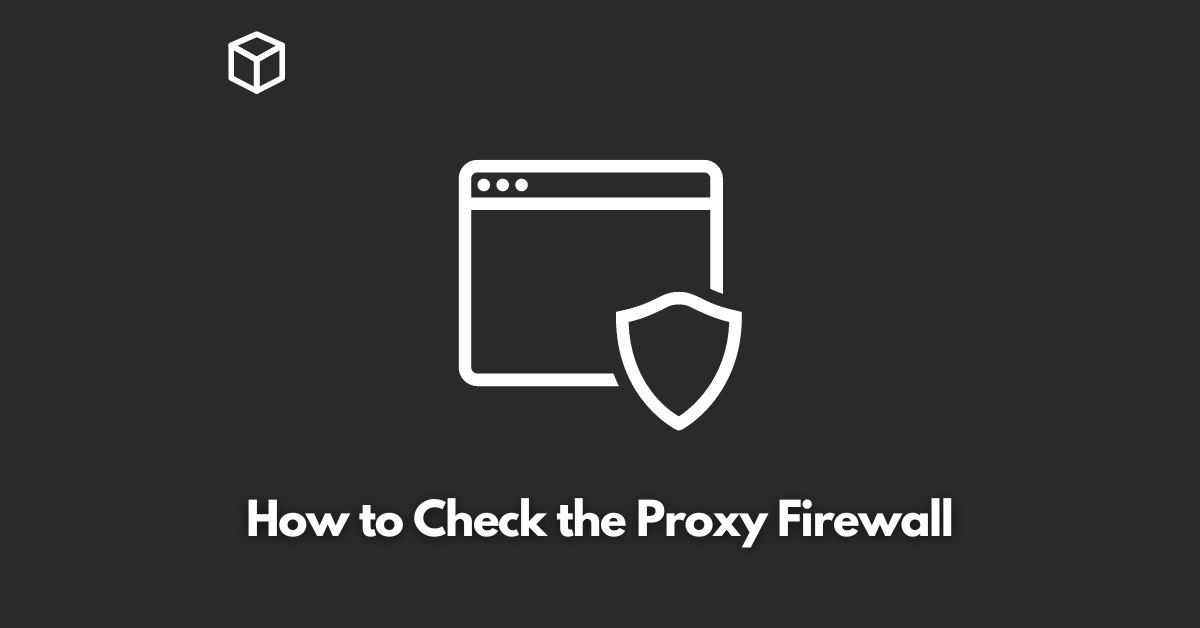It’s essential to have a secure and stable network.
One important aspect of keeping your network running smoothly is checking your proxy firewall and DNS configuration.
In this article, we’ll cover everything you need to know about checking these settings and troubleshooting any issues that may arise.
What is a Proxy Firewall
A proxy firewall is a type of firewall that sits between your computer and the internet.
It acts as a middleman, filtering and blocking any unwanted traffic from reaching your network. DNS, or Domain Name System, is a system that translates domain names (such as www.google.com) into IP addresses (such as 216.58.194.174).
By checking your proxy firewall and DNS configurations, you can ensure that your network is secure and functioning properly.
Checking Proxy Firewall Configuration
To check if a proxy firewall is enabled on your network, you can follow these steps:
- Click on the “Start” button on your Windows computer and type “Internet Options” in the search bar.
- Click on “Internet Options” from the search results.
- Click on the “Connections” tab and then click on the “LAN settings” button.
- Check the “Use a proxy server for your LAN” option. If it’s checked, then a proxy firewall is enabled on your network.
Once you’ve confirmed that a proxy firewall is enabled on your network, you can check the settings to see which websites and IP addresses are blocked.
Depending on the type of proxy firewall you’re using, the steps to access these settings may vary.
You can refer to the documentation of your specific firewall to learn how to check the settings.
If you’re experiencing issues with your proxy firewall, there are a few common troubleshooting steps you can try.
One common issue is that certain websites are blocked even though you want to access them.
In this case, you can try adding the website to the list of allowed websites in your proxy firewall settings.
Another issue is that your internet connection is slow.
This could be caused by your proxy firewall blocking too many websites or IP addresses, causing delays in your internet connection.
To fix this, you can try reducing the number of blocked websites or IP addresses.
Checking DNS Configuration
To check the DNS settings on your computer or network, you can follow these steps:
- Click on the “Start” button on your Windows computer and type “cmd” in the search bar.
- Click on “Command Prompt” from the search results.
- Type “ipconfig /all” and press “Enter.”
- Look for the “DNS Servers” section. The IP addresses listed here are the DNS servers currently being used by your network.
If you want to change the DNS server being used by your network, you can do so by following these steps:
- Click on the “Start” button on your Windows computer and type “Control Panel” in the search bar.
- Click on “Control Panel” from the search results.
- Click on “Network and Sharing Center” and then click on “Change adapter settings.”
- Right-click on your active network connection and select “Properties.”
- Click on “Internet Protocol Version 4 (TCP/IPv4)” and then click on the “Properties” button.
- Select the “Use the following DNS server addresses” option and enter the new DNS server addresses.
If you’re experiencing issues with your DNS settings, there are a few common troubleshooting steps you can try.
One issue is that you’re unable to access certain websites.
This could be caused by incorrect DNS settings.
To fix this, you can try changing the DNS server to a more reliable one, such as Google Public DNS or OpenDNS.
Another issue is that your internet connection is slow.
This could be caused by your DNS server being located far away from your location, causing delays in resolving domain names.
To fix this, you can try switching to a DNS server that is closer to your location.
Conclusion
In summary, checking your proxy firewall and DNS configurations is crucial for ensuring a secure and stable network.
By regularly checking these settings and troubleshooting any issues that may arise, you can ensure that your network is running smoothly.
Remember to keep an eye on the list of blocked websites and IP addresses, and to make sure that your DNS server is up-to-date and reliable.




